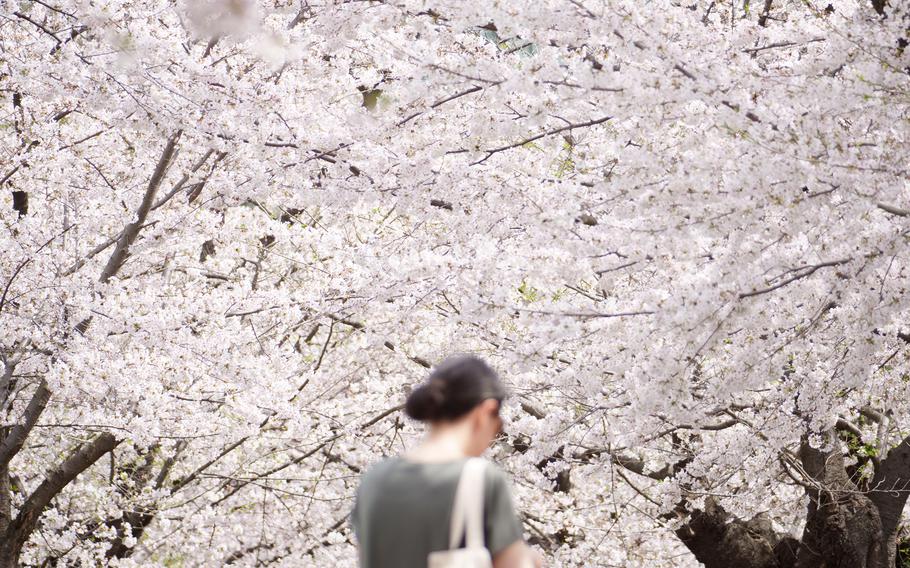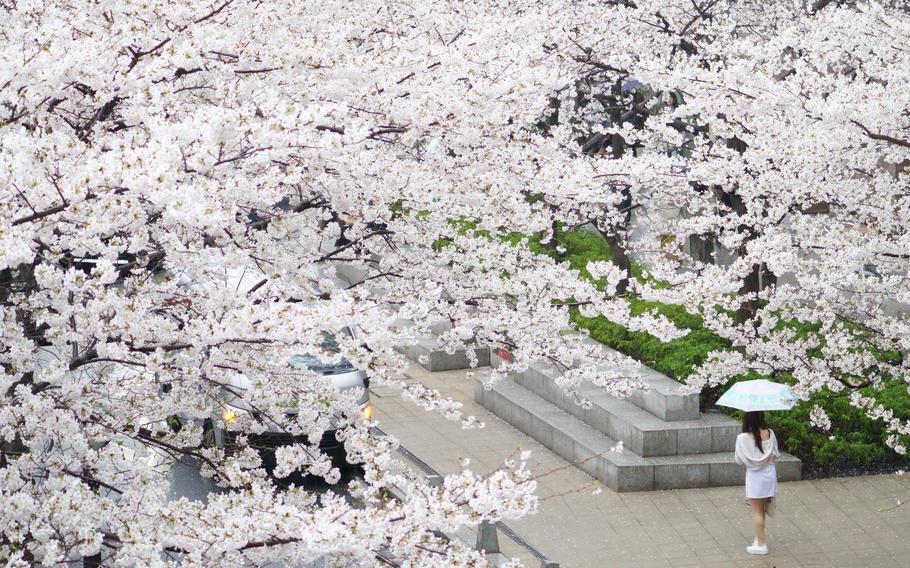
Cherry blossoms reach full bloom at Aoyama Cemetery in Tokyo, March 24, 2023. (Akifumi Ishikawa/Stars and Stripes)
TOKYO — Japan’s cherry blossoms, a hallmark of spring, are expected to bloom on schedule this year, with Tokyo’s first flowers appearing on March 25, according to commercial weather forecasters.
The Japan Meteorological Corp. predicts cherry trees will begin flowering in the capital before spreading to other major cities, including Kochi, Fukuoka and Kagoshima on March 26 and Nagoya on March 27. In Sapporo, the blossoms are expected by April 28, according to the company’s Feb. 13 news release.
“In many places across the country, cherry blossoms will bloom at the same rate as an average year or later than usual,” the forecast said. “They are expected to start blooming in Tokyo on March 25, followed by Kyushu and Shikoku regions.”
The forecast covers Somei Yoshino trees, the most common ornamental cherry variety in Japan, and includes approximately 1,000 popular viewing locations from Sapporo in northern Hokkaido to Kagoshima in the south. The company has updated its cherry blossom predictions four times so far this year.
Full bloom is expected around April 1 in Tokyo, April 4 in Fukuoka and April 24 in Aomori, according to the release.

Cherry blossoms reach full bloom along the Meguro River in Tokyo, March 24, 2023. (Akifumi Ishikawa/Stars and Stripes)
Another private forecaster, Weathernews Inc., predicted cherry blossoms will arrive around the same time as an average year or slightly earlier. It forecast Tokyo, Fukuoka and Kochi will see their first blooms on March 21, followed by Nagasaki, Kumamoto, Hiroshima and Yokohama on March 22.
Weathernews projected full bloom about a week after the blossoms first appear in western and eastern Japan, while in Hokkaido, peak bloom is expected at the end of April, roughly a week earlier than average.
The company also predicted normal temperatures in the Tokai region of central Japan, while the Hokuriku and Kanto-Koshin regions could see slightly above-average temperatures. Northern Japan is expected to experience warmer-than-usual conditions this spring.
The first blossoms appeared on Okinawa on Jan. 5, which was 11 days earlier than an average year, according to Weathernews. Hikanzakura, also known as Ryukyu kanhinzakura, are the most common type of cherry trees on the island.
The Japan Meteorological Agency, the government’s weather authority, stopped issuing cherry blossom forecasts in 2010, leaving private companies to provide the widely anticipated predictions.